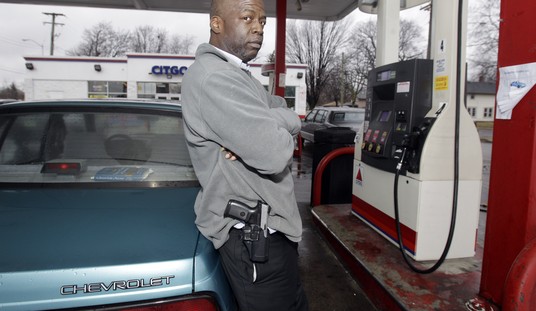There was an attempted assassination this past Saturday night at the Monroeville Mall in Monroeville, Pennsylvania, that left three people fighting for their lives. The alleged shooter, a 17-year-old with a juvenile record of gun violence, had chosen the Macy’s store at the mall to take out his target, knowing the mall to be a “gun free zone.”
Thomas and Mary Singleton were simply innocent bystanders who were at the wrong place at the wrong time when serial thug Tarod Thornhill whipped out a handgun and opened fire.
Thomas and Mary Singleton happened to walk between the shooter and his intended victim just as the shots were fired. A responding officer saw Thomas Singleton quickly losing blood, which was flowing from the artery of his left leg. The officer used a tourniquet to stop that flow while waiting for paramedics.
Monroeville Police Chief Doug Cole said the tourniquets were issued starting in September, based on information police were getting from medical personnel about how they could save lives. Cole says they’re being used more often to treat patients who are bleeding from limbs before ambulances arrive.
While this may not be the first time that a law enforcement officer has saved a wounded crime victim with a tourniquet, is is certainly a very rare event. Most officers are not provided a individual first aid kit (IFAK) or emergency personal injury kit (EPIK) as part of their department-issue gear, and tourniquets are not universal in these kits. Many people (law enforcement and other civilians) who do have an IFAK or EPIK kits buy their tourniquets as an add-on item.
The bullet that struck Mr. Singleton hit is femoral artery, which is a death sentence in a matter of minutes in most instances. It was incredibly fortunate that an officer was nearby, equipped with a tourniquet, properly diagnosed the artery strike for what it was, and was able to apply the tourniquet in time to keep from bleeding out. Mr. Singleton is still in critical condition, but thanks to a well-equipped officer, he stands a good chance of surviving.
* * *
In a prior Townhall Magazine column that I would love to see all shooters include an IFAK in their range bag, and spend the time to get the first aid training needed to patch up the more firearms-related injuries to ensure that people remain alive long enough for the EMTs to arrive on scene. Primarily, we’re talking about hemorrhage control.
I’m now starting to wonder if a “mini-IFAK” could be developed and packaged for every-day carry (EDC) that is made up of a safe-ish fabric cutting instrument (something like a seatbelt cutter, maybe?) to remove clothing from around injuries, a self-adhering clotting-agent impregnated bandage with a pressure cup, and an dead-simple tourniquet with a slip-on carrying case. If a kit designer could get the size down from the large military kits and even the cargo-pocket-friendly IFAK “light” versions to something the size of a large cell phone case, I think they could find a viable market among serious concealed carriers.
Would you carry such a mini-EPIK in your range bag, or as part of your EDC?
[Photo: Pocket EPIK from AR500Armor.com]








Join the conversation as a VIP Member